Who is Krampus ?
In the shadowy realm of folklore, Krampus stands as a chilling figure – a stark counterpoint to the jovial St. Nicholas. This horned, demonic creature is a central figure in Alpine traditions, a symbol of punishment and fear meant to ensure good behavior among children.
The name Krampus derives from the German word Krampen, which means “claw,” and most depictions of Krampus show him with big claws, sharp horns, and oddly long red tongue. Krampus is the devilish companion to St. Nicholas and they both arrive together on the evening of December 5, which is known as Krampusnacht. St. Nicholas rewards the nice children by leaving presents, and Krampus beats those who are naughty with birch branches and sticks. In some stories it is said that Krampus eats the naughty children and takes them to hell. But where did this fearsome figure originate, and how has it influenced literature and myth?
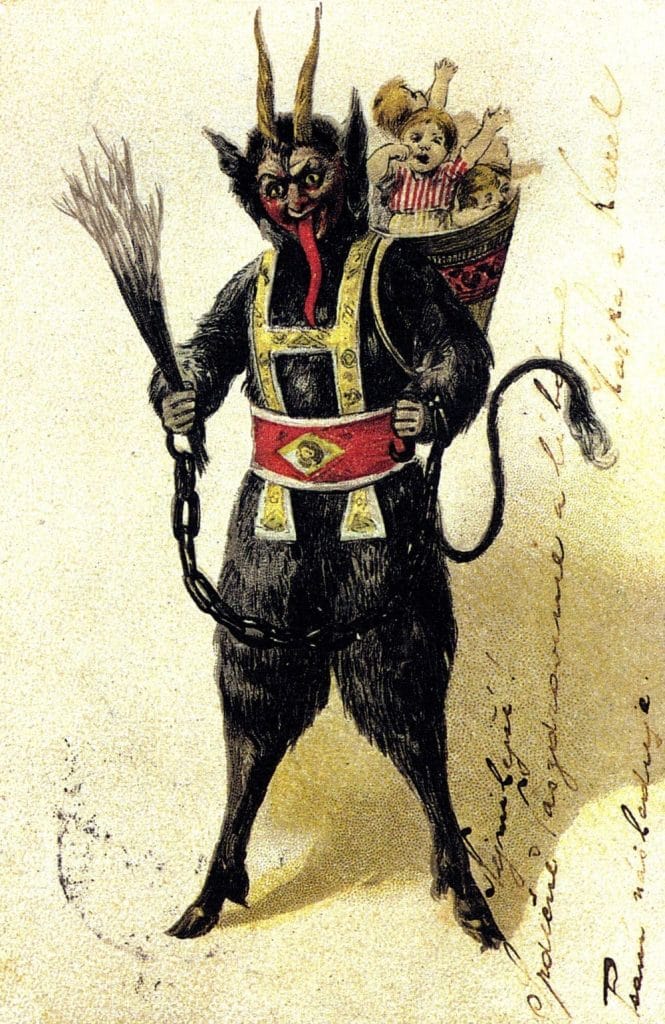
Origins and Mythos
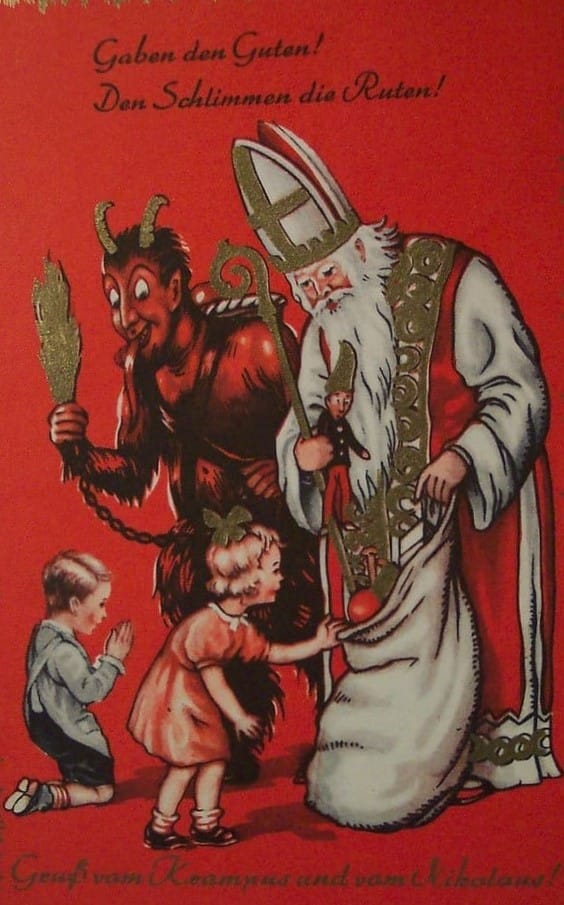
Early depictions of Krampus reveal his role as a counterpart to benevolent winter spirits, balancing the light and darkness of the season. By the 17th century, with the spread of Christianity, Krampus was incorporated into Christmas traditions alongside St. Nicholas, blending pagan and Christian customs.
On December 5th, known as Krampusnacht or Krampus Night, the beastly figure would roam the streets, punishing naughty children by swatting them with birch branches or threatening to carry them off in a sack.
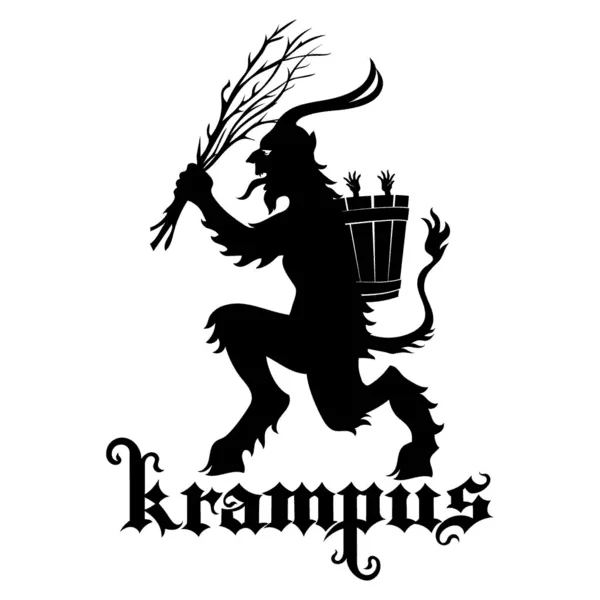
Krampus has long been a source of inspiration in literature, offering a dark reflection of holiday themes. During the 19th century, his myth gained traction through postcards and greeting cards, known as Krampuskarten, which depicted his terrifying form alongside humorous warnings about bad behavior.
Modern literature has embraced Krampus with renewed vigor. Authors like Gerald Brom, in his novel Krampus: The Yule Lord, reimagine the creature as a misunderstood antihero, casting him in a battle against Santa Claus and exploring themes of vengeance, justice, and redemption. Horror writers also use Krampus as a vehicle for chilling Christmas tales, weaving his myth into stories that play on the juxtaposition of festive cheer and primal fear.
Cultural Resonance in Folklore
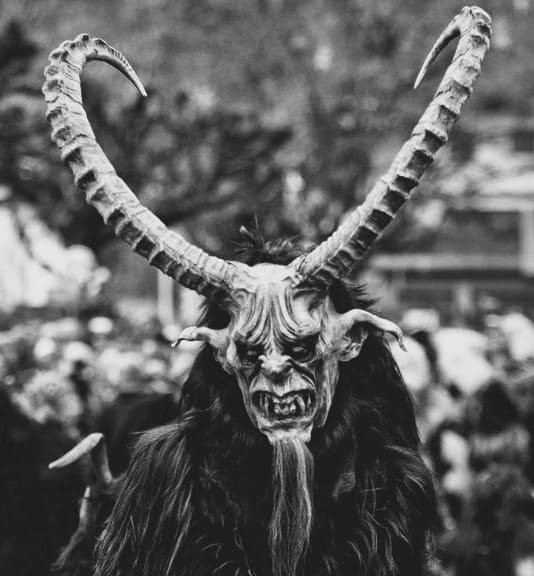
Krampus represents more than just a figure of fear; he embodies societal values and the need for balance. In folklore, he underscores the importance of morality and the consequences of misdeeds. As such, he is a potent reminder of the duality of human nature—where joy is matched by sorrow, and light is tempered by darkness.

Celebrations of Krampus Night
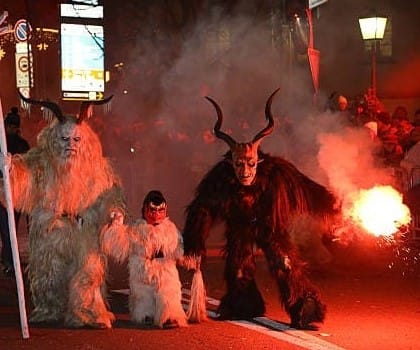
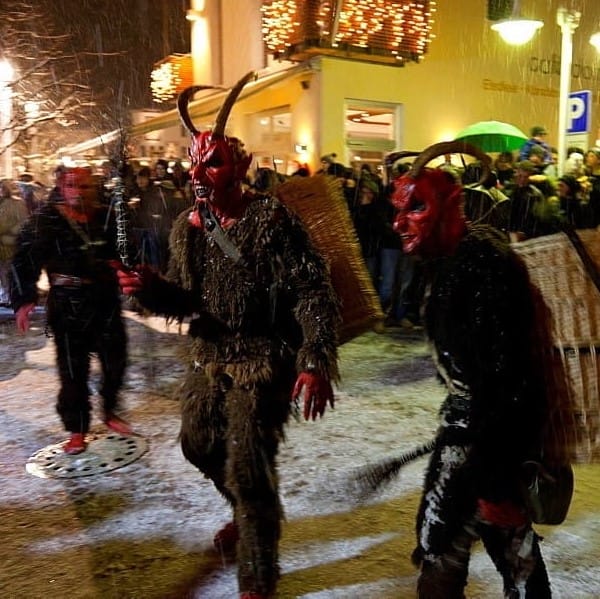
It seems that Krampus is becoming more and more popular each year. In Bavaria, there’s been an artistic revival of making amazing hand-carved Krampus masks. These masks are often worn during the Krampuslauf, which is where people dress up as Krampus and parade through the streets and try to scare all the spectators.
The resurgence of Krampus celebrations in Europe and North America, including parades and festivals, highlights the creature’s enduring appeal. These events pay homage to the folkloric tradition while allowing modern audiences to revel in his mystique.
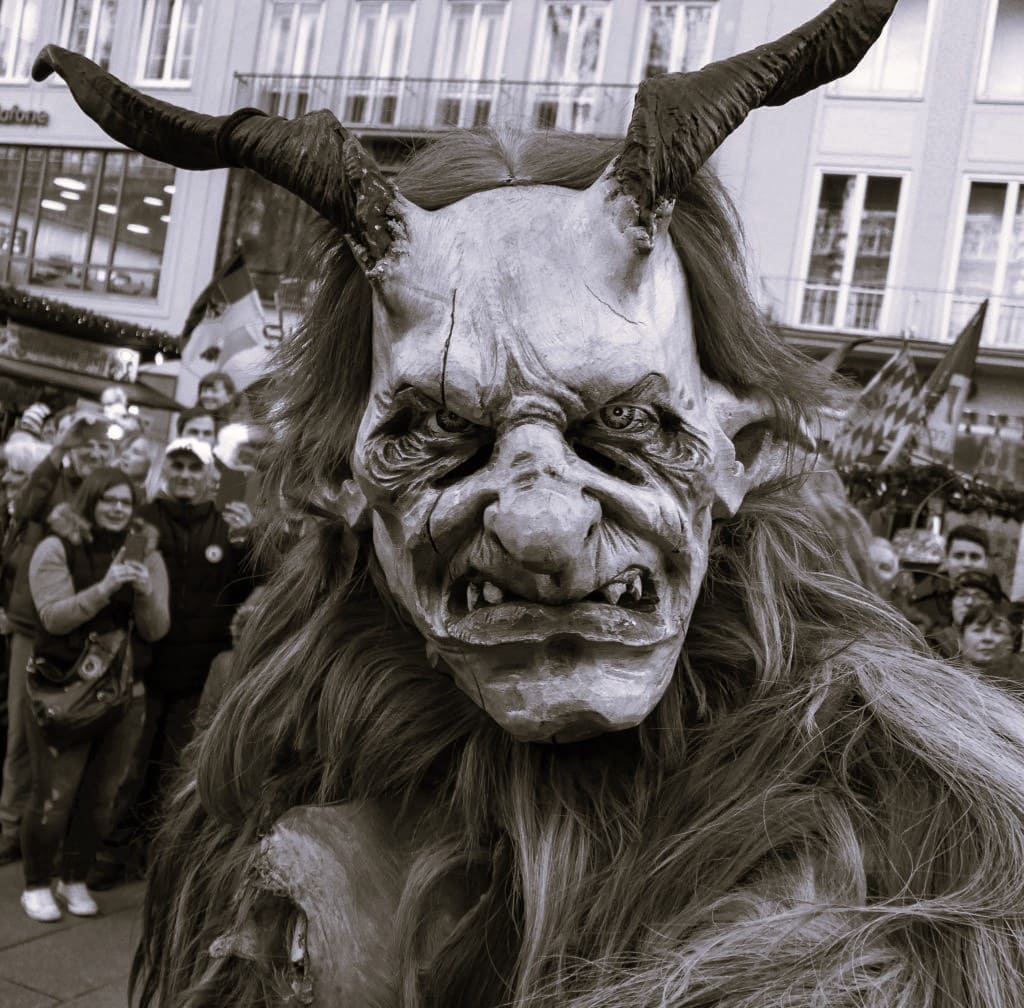
Modern celebrations of Krampus focus on Krampusnacht (Krampus Night), held annually on December 5th, especially in Alpine regions like Austria, Germany, and Slovenia.
Revelers dress as Krampus in elaborate costumes, complete with horns, fangs, and bells, parading through streets in lively Krampuslauf (Krampus runs).
These events mix fright and fun, with participants playfully “punishing” onlookers and creating a festive, eerie atmosphere. In North America and beyond, Krampus-themed parties and festivals have grown in popularity, blending traditional folklore with contemporary revelry. These celebrations honor Krampus as a symbol of winter’s dark side, offering a thrilling twist to holiday traditions.
